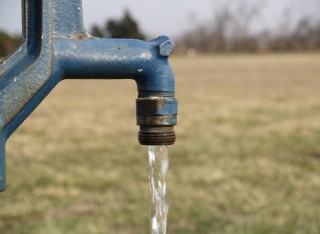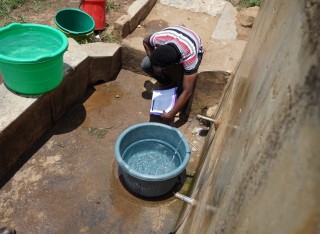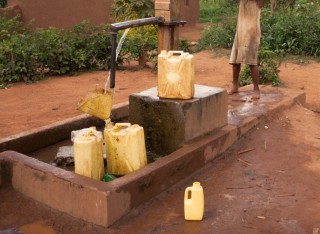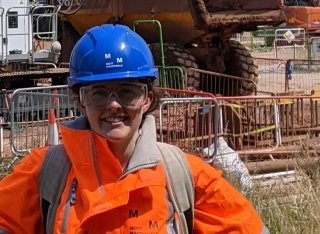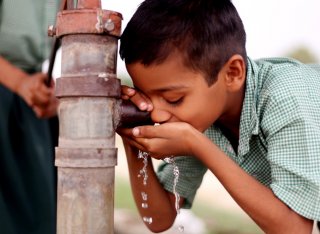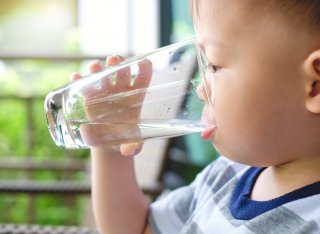
Dr Katherine Pond
About
Biography
Kathy has over 25 years experience in cross-disciplinary national and international research and consultancy focusing on improving water quality and public health in low and high income countries. She has worked closely with the World Health Organisation (WHO) since joining Surrey in 2000 and is the lead contact for the WHO Collaborating Centre for the Protection of Water Quality and Human Health held by the University of Surrey.
Prior to joining the University of Surrey Kathy worked for four years as co-ordinator of a national coastal pollution project.
She spent a 2-year secondment at the WHO European Centre for Environment and Health, Rome, Italy where she worked in the Water and Sanitation Unit.
Since joining the University she has continued to work as a WHO temporary advisory providing technical and administrative support and training in the field of drinking water quality and human health.
Kathy is now an Associate Professor in the School of Engineering and is the programme lead for the MSc in Water and Environmental Engineering.
Kathy is an invited member of the Drinking Water Inspectorate Advisory Board https://www.dwi.gov.uk/drinking-water-quality-advisory-group/
University roles and responsibilities
- Associate Professor
- Programme Lead and Admissions Officer, MSc Water and Environmental Engineering
- Member of Athena Swan SAT
- Personal Tutor
- Distance Learning Manager
News
In the media
ResearchResearch interests
My research is focused on improving drinking-water quality. I have a particular interest in small water supplies. Small drinking water supplies such as boreholes, springs and wells are used by millions of people in both developed and developing countries. Users face a number of challenges which make them vulnerable to the consequences of poor drinking water quality. This work is relevant globally to Sustainable Development Goal 6 and is supporting the World Health Organisation (WHO) in the development of guidance and tools for small water supply systems. The outputs of this research has fed into the WHO Guidelines for Drinking Water Quality (GDWQ). https://www.who.int/publications/i/item/9789240088740
The GDWQ is the most authoritative technical guidance on operation and management of small supplies, particularly in rural or remote areas, and informs government policy worldwide.
Most recently, I have co-developed a training pack for public health officials to improve surveillance of drinking water: : https://www.who.int/europe/publications/i/item/9789289054430
I am interested in developing research topics around the resilience of small supplies and sanitation systems to resist the impact of environmental and anthropogenic stressors.
My second area of interest is improving recreational water quality. Previous research in this area include the optimization of swimming pool design to reduce operational costs and develop energy efficient systems. Building-related energy use is an increasing concern for the aquatic leisure industry, with the national carbon reduction targets almost certain to affect the leisure industry. This research programme tackled these design challenges from the perspective of an integrated building, chemical and pathogen control perspective.
I contributed to the WHO Guidelines for Safe Recreational Water Environments and have a PhD student who is developing a digital twin to help identify sources of pollution impacting bathing waters. Once the sources are identified, effective management can be implemented.
Research projects
Improving water safety planning: Data to decisions’ – case studies from Uganda and Rwanda- Principal investigator: Dr Katherine Pond
- Start date: January 2021
- End date: July 2021
- Funding amount: £48,000.
Water Quality Analysis Tool (WQAT) DevelopmentThe aim of this project funded through the Sprint programme, is to develop a water quality analysis tool. The novel aspect is its ability to identify and analyse the quality of water bodies and source of pollutants by utilizing high resolution space data. Data will be processed to extract spectral features that are sensitive to water quality variables. The extracted features will be correlated with field data to validate their sensitivity and the relationship will be modelled to produce map of water quality in Lake Ziway in Ethiopia.
PhD project - Natasha Harris - APPLICATION OF FLUORESENCE SPECTROSCOPY TO UNDERSTAND SOURCES AND INSTREAM PROCESSING OF RIVERINE NATURAL ORGANIC MATTERThis PhD project is exploring how microbial processing effects fluorescent organic matter signals and if this can be measured in the field. Focusing on the upper Thames catchment, this will involve a novel approach of measuring fluorescent organic matter alongside microbial assessment methods beyond simple enumeration, including activity assessments and sequencing, as well as more typical water chemistry variables.
Using nature to improve bathing water quality - PhD projectNbS require competent designs, with detailed planning and construction to ensure optimal performance, longevity and environmental integrity. Furthermore, the performance of a NbS may not be consistent throughout the year, a particular issue with regard to water quality. There are currently no established design standards for many NbS.
Bathing water quality is gaining huge public focus but NbS has not been explored as an approach to improve them. The project will evaluate the primary and co-benefits of existing NbS, primarily designed to improve water quality, in case study areas using historical and new field data. We will be investigating the potential of NbS to improve bathing water quality. Through an integrative individual-based (“Digital Twin”) model (DT), combining hydrological and hydraulic processes, while accounting for socio-economic determinants, optimum NbS or combinations of NbS under different climatic conditions will be identified. This approach will be used to simulate and model different NbS intervention packages which may be appropriate to improve bathing waters, enable the assessment of their benefits and disbenefits compared to the baseline. New observations (indicator bacteria and observations which may affect water quality) will be collected to inform and complement existing data sets and improve conceptual model development and model implementation. We will explore NbS currently being implemented within selected catchments, and suggest other measures to demonstrate the transferability and scalability of the framework designed. Using stakeholder input (including citizen science), different outcomes can be balanced to identify an optimal, sustainable package of NbS.
Research collaborations
Collaborated with Lensa, University of Leicester on a Sprint-funded project to develop a water quality analysis tool using satellite data. This project is also in collaboration with colleagues from the Department of Civil and Environmental Engineering, University of Surrey - Dr Belen Marti-Cardona, Dr Donya Hajializadeh and Dr Emma Hellawell.
Previous collaborations with Defra and Surrey Sports Park Ltd to look at design challenges of swimming pools from a health and energy conservation perspective.
Collaborated with WHO, Kyambogo University, Uganda; University of Iceland, British Geological Survey and Polytechnic University of Malawi to improve sanitary risk assessment for small drinking water supplies.
Output: https://www.who.int/publications/i/item/9789240089006
Research interests
My research is focused on improving drinking-water quality. I have a particular interest in small water supplies. Small drinking water supplies such as boreholes, springs and wells are used by millions of people in both developed and developing countries. Users face a number of challenges which make them vulnerable to the consequences of poor drinking water quality. This work is relevant globally to Sustainable Development Goal 6 and is supporting the World Health Organisation (WHO) in the development of guidance and tools for small water supply systems. The outputs of this research has fed into the WHO Guidelines for Drinking Water Quality (GDWQ). https://www.who.int/publications/i/item/9789240088740
The GDWQ is the most authoritative technical guidance on operation and management of small supplies, particularly in rural or remote areas, and informs government policy worldwide.
Most recently, I have co-developed a training pack for public health officials to improve surveillance of drinking water: : https://www.who.int/europe/publications/i/item/9789289054430
I am interested in developing research topics around the resilience of small supplies and sanitation systems to resist the impact of environmental and anthropogenic stressors.
My second area of interest is improving recreational water quality. Previous research in this area include the optimization of swimming pool design to reduce operational costs and develop energy efficient systems. Building-related energy use is an increasing concern for the aquatic leisure industry, with the national carbon reduction targets almost certain to affect the leisure industry. This research programme tackled these design challenges from the perspective of an integrated building, chemical and pathogen control perspective.
I contributed to the WHO Guidelines for Safe Recreational Water Environments and have a PhD student who is developing a digital twin to help identify sources of pollution impacting bathing waters. Once the sources are identified, effective management can be implemented.
Research projects
- Principal investigator: Dr Katherine Pond
- Start date: January 2021
- End date: July 2021
- Funding amount: £48,000.
The aim of this project funded through the Sprint programme, is to develop a water quality analysis tool. The novel aspect is its ability to identify and analyse the quality of water bodies and source of pollutants by utilizing high resolution space data. Data will be processed to extract spectral features that are sensitive to water quality variables. The extracted features will be correlated with field data to validate their sensitivity and the relationship will be modelled to produce map of water quality in Lake Ziway in Ethiopia.
This PhD project is exploring how microbial processing effects fluorescent organic matter signals and if this can be measured in the field. Focusing on the upper Thames catchment, this will involve a novel approach of measuring fluorescent organic matter alongside microbial assessment methods beyond simple enumeration, including activity assessments and sequencing, as well as more typical water chemistry variables.
NbS require competent designs, with detailed planning and construction to ensure optimal performance, longevity and environmental integrity. Furthermore, the performance of a NbS may not be consistent throughout the year, a particular issue with regard to water quality. There are currently no established design standards for many NbS.
Bathing water quality is gaining huge public focus but NbS has not been explored as an approach to improve them. The project will evaluate the primary and co-benefits of existing NbS, primarily designed to improve water quality, in case study areas using historical and new field data. We will be investigating the potential of NbS to improve bathing water quality. Through an integrative individual-based (“Digital Twin”) model (DT), combining hydrological and hydraulic processes, while accounting for socio-economic determinants, optimum NbS or combinations of NbS under different climatic conditions will be identified. This approach will be used to simulate and model different NbS intervention packages which may be appropriate to improve bathing waters, enable the assessment of their benefits and disbenefits compared to the baseline. New observations (indicator bacteria and observations which may affect water quality) will be collected to inform and complement existing data sets and improve conceptual model development and model implementation. We will explore NbS currently being implemented within selected catchments, and suggest other measures to demonstrate the transferability and scalability of the framework designed. Using stakeholder input (including citizen science), different outcomes can be balanced to identify an optimal, sustainable package of NbS.
Research collaborations
Collaborated with Lensa, University of Leicester on a Sprint-funded project to develop a water quality analysis tool using satellite data. This project is also in collaboration with colleagues from the Department of Civil and Environmental Engineering, University of Surrey - Dr Belen Marti-Cardona, Dr Donya Hajializadeh and Dr Emma Hellawell.
Previous collaborations with Defra and Surrey Sports Park Ltd to look at design challenges of swimming pools from a health and energy conservation perspective.
Collaborated with WHO, Kyambogo University, Uganda; University of Iceland, British Geological Survey and Polytechnic University of Malawi to improve sanitary risk assessment for small drinking water supplies.
Output: https://www.who.int/publications/i/item/9789240089006
Supervision
Postgraduate research supervision
Current and recent PhD students:
Richie King (completed January 2022), partially funded by WHO, assessed the benefits and challenges of using the risk assessment tool advocated by WHO for users of small water supplies. He tested and revised the tool accordingly in collaboration with Kyambogo University in Uganda and University of Iceland, University of Malawi, the British Geological Survey (BGS) and Surrey Dept of Law. The updated risk assessment forms are published on the WHO website.
Jo Herschan (NERC Scenario-funded, completed April 2023) is investigating the issue of collection of WASH data and use or more specifically non-use in selected countries. This is an issue identified by the recent WHO GLAAS report.
Natasha Harris (NERC Scenario-funded) is working on developing sensors for monitoring drinking water quality in low and high income countries. This project is in collaboration with BGS.
Sallu Pujeh (funded through Shine Scholarship, part-time, due to complete in 2027), is Assessing Infrastructure Resilience of Small Water Supplies in Blama, Sierra Leone. This project is jointly supervised by Donya Hajializadeh and Donald John MacAllister (BGS).
Neda Shishmanova (NERC Scenario-funded) is working on improving bathing water quality in the South coast of England. This projected is in collaboration with Southern Water and jointly supervised with Dan Lapworth (BGS) and Donya Hajializadeh.
Mahilet Berihum (NERC Scenario-funded) is working on improving small drinking water supply infrastructure, particularly in terms of supply chains. This project has received additional support from the Skat Foundation and we are working with Stop the Rot Campaign (Kerstin Danert) and BGS (Donald John MacAllister) and jointly supervised with Donya Hajializadeh.
Completed postgraduate research projects I have supervised
Teaching
Programme Leader: MSc Water and Environmental Engineering
Module leader ENGM289 Global Challenges in Water and Health - MSc Water and Environmental Engineering
Module Leader ENGM303 Nature-Based Solutions to Environmental Engineering
Year 1 tutor
Sustainable development goals
My research interests are related to the following:
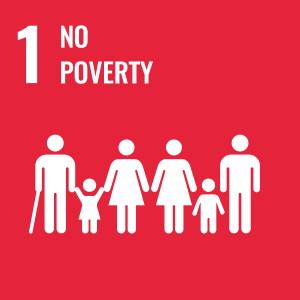

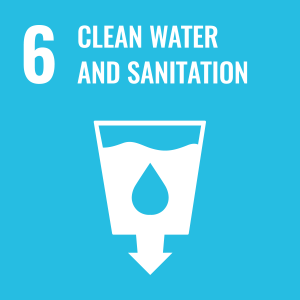
Publications
Tryptophan-like fluorescence (TLF) is used to indicate anthropogenic inputs of dissolved organic matter (DOM), typically from wastewater, in rivers. We hypothesised that other sources of DOM, such as groundwater and planktonic microbial biomass can also be important drivers of riverine TLF dynamics. We sampled 19 contrasting sites of the River Thames, UK, and its tributaries. Multivariate mixed linear models were developed for each site using 15 months of weekly water quality observations and with predictor variables selected according to the statistical significance of their linear relationship with TLF following a stepwise procedure. The variables considered for inclusion in the models were potassium (wastewater indicator), nitrate (groundwater indicator), chlorophyll-a (phytoplankton biomass), and Total bacterial Cells Counts (TCC) by flow cytometry. The wastewater indicator was included in the model of TLF at 89 % of sites. Groundwater was included in 53 % of models, particularly those with higher baseflow indices (0.50–0.86). At these sites, groundwater acted as a negative control on TLF, diluting other potential sources. Additionally, TCC was included positively in the models of six (32 %) sites. The models on the Thames itself using TCC were more rural sites with lower sewage inputs. Phytoplankton biomass (Chlorophyll-a) was only used in two (11 %) site models, despite the seasonal phytoplankton blooms. It is also notable that, the wastewater indicator did not always have the strongest evidence for inclusion in the models. For example, there was stronger evidence for the inclusion of groundwater and TCC than wastewater in 32 % and 5 % of catchments, respectively. Our study underscores the complex interplay of wastewater, groundwater, and planktonic microbes, driving riverine TLF dynamics, with their influence determined by site characteristics.
Water Safety Plan (WSP) implementation has the potential to greatly improve, commonly very challenging and resource limited, small drinking water supplies. Although slower than in urban or high-income settings, the uptake of WSPs in low- and middle-income countries (LMICs) is accelerating. Understanding the factors which will make a WSP successful will further improve efficient uptake and assist with its long-term sustainability. Based on an extensive literature search using the Preferred Reporting Items for Systematic Reviews and Meta-Analyses (PRISM-A) methodology, 48 publications, including case studies and guidance documentation, formed the basis of this review. These were analysed using inductive and deductive coding methods to (i) identify the success factors applicable to WSP implementation in small drinking water supplies in LMICs and (ii) to investigate which factors are more or less critical depending on the geography and level of development of the implementing country. Key challenges identified during the review process were also noted. A comparison of these success factors was made with those identified from high-income and urban settings. The three most important success factors identified are the development of technical capacity, community engagement, and monitoring and verification. Factors specific to small drinking water supplies in LMICs include support from non-government organisations, integration into existing water sanitation and hygiene (WASH) programs, simplicity, and community engagement. Certain factors, such as adaptability, the use of guidance documentation, international collaboration, the role of pilot studies, knowledge sharing, and stakeholder involvement are applicable to all WSP settings. Due to the specific challenges faced by small drinking water systems and the limited number of original research publications on this topic, this study highlights the need for further data collection and research focused on success factors in these settings. It is anticipated that the consideration of the success factors identified in this study will assist implementers in improving the uptake and long-term sustainability of WSPs in small drinking water supplies in low- and middle-income settings.
To achieve Sustainable Development Goals (SDGs) 6, universal and equitable access to safe and affordable drinking-water quality and sanitation for all, and 10, to reduce inequality within and among countries, additional and urgent work is required. Efforts to achieve these Goals in the context of small drinking-water supplies, which are the furthest behind in regards to progress, are of particular need. Reasons for this disparity in progress include the remoteness of access to small drinking-water supplies and the lack of technical and financial capacity for monitoring supplies. The World Health Organization promote the use of Sanitary inspection (SI) as an on-site assessment of risk. Despite the potential to increase the body of knowledge and information on supplies in a region, there has been limited research into the role of citizen science and SIs. To meet SDG targets, we need to improve the reach of SIs. This study uses a mixed methods approach of quantitative on-site SI data collection and remote SI data collection via photographic images, together with qualitative data collection, collected by non-expert students, who are citizens of Malawi, as well as a panel of experts in the field of SI. Results indicate that, although further research into the topic is required prior to widescale implementation, the potential exists for citizens to conduct SI, with remote expert verification of the results using photographic images of supplies. Further documentation or guidance is required to support citizens in this process. The results highlight a critical gap in the availability of appropriate documentation for unprotected spring sources which is urgently required. The use of citizen science for SI data collection is in its infancy. However, this study indicates that there is potential to explore the use of citizen science in this area, which will contribute to achieving SDGs 6 and 10.
Sanitary inspections (SIs) are checklists of questions used for achieving/maintaining the safety of drinking-water supplies by identifying observable actual and potential sources and pathways of contamination. Despite the widespread use of SIs, the effects of training on SI response are understudied. Thirty-six spring supplies were inspected on two occasions, pre- and post-training, by an instructor from the research team and four local inspectors in the Mukono District of Uganda. SI score agreement between the instructor and each inspector was calculated using Lin’s concordance correlation coefficient. Average SI score agreement between the instructor and all inspectors increased post-training for the Yes/No answer type (0.262 to 0.490). For the risk level answer type (e.g., No, Low, Medium, High), average SI score agreement between the instructor and all inspectors increased post-training (0.301 to 0.380). Variability of SI scores between the four inspectors was calculated using coefficient of variation analysis. Average SI score variability between inspectors reduced post-training for both answer types, Yes/No (21.25 to 16.16) and risk level (24.12 to 19.62). Consistency of answer agreement between the four inspectors for each individual SI question was calculated using index of dispersion analysis. Average answer dispersion between inspectors reduced post-training for both answer types, Yes/No (0.41 to 0.27) and risk level (0.55 to 0.41). The findings indicate that training has a positive effect on improving answer agreement between inspectors. However, advanced training or tailoring of SI questions to the local context may be required where inconsistency of responses between inspectors persists, especially for the risk level answer type that requires increased use of inspector risk perception. Organisations should be aware of the potential inconsistency of results between inspectors so that this may be rectified with appropriate training and, where necessary, better SI design and customisation.
Small drinking-water supplies face particular challenges in terms of their management. Being vulnerable to contamination but often not monitored regularly nor well-maintained, small drinking-water supplies may pose consequences for health of users. Sanitary inspection (SI) is a risk assessment tool to identify and manage observable conditions of the water supply technology or circumstances in the catchment area that may favour certain hazardous events and introduce hazards which may become a risk to health. This qualitative research aimed to identify the strengths and weaknesses of the SI tool as published by the World Health Organisation to inform a review and update of the forms and to improve their robustness. The study identified a number of benefits of the approach, such as its simplicity and ease of use. Challenges were also identified, such as potential for inconsistencies in perception of risk between inspectors, in interpreting questions, and lack of follow-up action. The authors recommend a revision of the existing SI forms to address the identified challenges and development of complementary advice on possible remedial action to address identified risk factors and on basic operations and maintenance.
The World Health Organization promotes risk assessment and risk management through Water Safety Plans (WSPs) as the most effective way to manage drinking-water supplies. Despite proven advantages of this approach in other regions, WSPs are still not widely used across small drinking-water supplies in Sub Saharan Africa. The aim of this research is to identify good practices and related gaps which may assist with formal uptake of WSPs for small drinking-water supplies in Rwanda. Through semi-structured interviews with the key stakeholders involved in small drinking-water supply management across Rwanda, the aim is achieved through the investigation of the following: (i) current drinking-water management challenges; (ii) stakeholder collaboration and data management activities including reporting of information; and (iii) the regulatory and policy environment. The use and awareness of WSPs in Rwanda was confirmed as low. However certain drinking-water management activities which align with the WSP methodology are being carried out. These include catchment management and stakeholder collaboration. Although legislation and policy are in place in Rwanda, communication and training of methods to implement WSPs are required to sustainably embed WSPs into practice. Several elements, including community engagement, systematic review of risks and data management, require greater focus to align with the WSP methodology. Respondents highlighted key drinking-water management challenges, including reactive budgeting and lack of sector prioritization, which could benefit from formal WSP implementation.
Owing to the managerial and regulatory setup of Private Water Supplies (PWS) in England and Wales, the attention and resource required to achieve ‘wholesome’ drinking-water, a regulatory term reflecting quality standards, is often limited. The requirement to risk assess PWS was first included in the English and Welsh Regulations in 2009 and 2010 respectively. However, compliance rates with risk assessment requirements remain low with concerns raised regarding the lack of subsequent action. Using a mixed methods approach of interviews and surveys, this research seeks to: (i) identify available data sources for the completion of risk assessments by Local Authorities; (ii) understand factors which facilitate or hinder decisions made and action taken based on risk assessments; (iii) investigate the influence of the regulatory environment on (i) and (ii); and (iv) pose suggestions for more efficient data use to help improve the drinking-water quality of PWS in England and Wales. Findings highlight gaps in the legislation which impact the national level understanding of PWS drinking-water quality and subsequently impact national level prioritization and resource allocation. The assigned stakeholders responsible for risk assessment are reviewed and discussed. Recommendations include the development of an environmental health database to support institutional data sharing; a greater recognition of the differing resource type and enforcement strategies required to undertake risk assessment, in comparison to water quality sampling alone; introduction of Sanitary Inspection forms to PWS operators and financial support structures to facilitate remedial action. Methods which may support reduced sampling data, such as hydrogeological modeling, are discussed.
It is possible to use co-fermentation to increase biogas production considerably in digesters with free capacity. Also, the energy production increases by increasing biogas production. Many co-substrates such as energy crops, biodegradable waste from the food industry, restaurants and public parks, etc. are on the market. Water consumption is decreasing because of population movement and a decreasing population size because of a drop in the birth rate. Therefore, capacities in digesters will increase and new uses for this capacity are needed. Co-fermentation could be one solution. Useful co-substrates should be identified by material characteristics. It is important to assess suitability of materials for fermentation in small-scale tests, and to gain experience particularly with regard to the handling, the compatibility of the biocoenosis in the digester and the effects of returning effluent to the activated sludge process. A test period with fat separator contents has started at the wastewater treatment plant, Wassmannsdorf, Germany. Biogas production and methane content increased compared to the reference cascade without co-substrate input.
Marine and beach litter include items that have been made and discarded into the marine environment by people. Over the past few decades concern has been growing regarding the amounts of litter that accumulate on beaches and seas. Litter issues have become very widespread of late due to public awareness and concern for environmental issues. Beach litter is sourced from three areas: marine, industrial and domestic wastes dumped at sea and riverine and beach litter. Such debris mars beach enjoyment, has safety implications (e.g. glass, syringes), needs cultural/attitudinal changes in order to reduce and prevent waste reaching both sea, and beaches. Irrespective of source, litter, the main culprit being plastics, is ubiquitous on global beaches and a perennial problem for any coastal manager. Plastics alone amount to some 265m tonnes worldwide much being recreational litter. Current litter policy must be geared to stopping it at source. Recycling plastics is often seen as a panacea to reducing such waste with many countries pushing for higher targets year by year. Current recycling policy is questionable, lacking workable solutions; in effect, a ‘knowledge lag’ exists with money being the inevitable forcing function. Figures from the USA show that just 33.4% of plastics are recycled; work done by WRAP in the UK suggest that 45% is achievable. Comparable and reliable methods to evaluate beach plastic litter are currently the weakest point of this particular scientific community. Marine debris can have serious effects on wildlife and their ecosystems; in some instances, such occurrences will be lethal. Clearly, it is essential that beach litter surveys obtain a representative sample by looking at annual litter counts; baseline studies should identify material types. Litter itself constitutes a serious hazard as shown from a number of previous studies, which suggest environmental quality and public health needs to be considered as key indicators. A universal approach inclusive of stringent regulations, particularly for plastic must be developed; incisive, risk-taking innovative technologies, especially in the chemistry of plastics are needed in order to solve the challenges ahead. In essence, to change the way we think about the environment.
Monitoring of marine debris has been undertaken around the world for several years. Its purposes are as follows. 1. To provide information on the types, quantities and distribution of marine debris. 2. To provide an insight into problems and threats associated with an area. 3. To assess the effectiveness of appropriate legislation and coastal management policies. 4. To identify source of marine debris. 5. To explore public health issues relating to marine debris. 6. To increase public awareness of the condition of the coastline. Three main methods have been described, each with variations. This paper provides an overview of the approaches, the advantages and disadvantages and describes the method used by what is the largest current monitoring programme in the UK. It is concluded that no standard technique can be universally employed for monitoring studies but that the use of volunteers is essential to achieve a large-scale survey. The use of volunteers has the added advantages of capitalizing on local knowledge of the coastline being surveyed and directly involving the public in coastal management issues.
The aesthetic and hygenic quality of beaches in England and Wales is discussed. Medical wastes and litter are becoming more of a public health issue in the two areas.
The influence of indicator bacteria associated with beach sands on recreational water quality has become increasingly recognized. Constant wave action may serve as a transport mechanism for delivering bacterial organisms to surface waters resulting in an increased frequency of dry weather advisories. The ability to reduce the concentration of these organisms may serve to improve recreational water quality. To date, few researchers have explored anthropogenic factors affecting the content of Escherichia coli in beach sands. This study explored the influence of mechanical beach grooming on in situ populations of Escherichia coli at a southwestern Lake Michigan beach to determine if an alteration in current beach management practices would serve to reduce the number of dry weather advisories in this community. Preliminary studies conducted during 2001 demonstrated that professional grooming significantly increased Escherichia coli content in beach sands relative to non-groomed or hand raked plots (p < 0.001). This data also suggested that deeper grooming might reduce differences between groomed and non-groomed areas. Subsequently, two mechanical grooming techniques were compared at Racine, WI in 2002: groomed to a depth of 5 to 7 cm with leveling of beach sands and groomed to a depth of 7 to 10 cm without leveling. Escherichia coli content between treatments were significantly correlated (p < 0.009). The density of the bacterium in deeper groomed/unleveled sands was significantly lower in visibly moist or wet but not dry sands (p = 0.038). In 2003, the manner in which beach sands were maintained using the mechanical beach groomer was altered and a follow-up study conducted. A 30 percent reduction in the number of poor water quality advisories due to dry weather events was achieved as a result of these measures. These results demonstrate that mechanical beach grooming may affect Escherichia coli content in beach sands, a potential source of non-point pollution to recreational waters.
Drinking-water supply and sanitation services are essential for human health, but their technologies and management systems are potentially vulnerable to climate change. An assessment was made of the resilience of water supply and sanitation systems against forecast climate changes by 2020 and 2030. The results showed very few technologies are resilient to climate change and the sustainability of the current progress towards the Millennium Development Goals (MDGs) may be significantly undermined. Management approaches are more important than technology in building resilience for water supply, but the reverse is true for sanitation. Whilst climate change represents a significant threat to sustainable drinking-water and sanitation services, through no-regrets actions and using opportunities to increase service quality, climate change may be a driver for improvements that have been insufficiently delivered to date. © IWA Publishing 2010.
Drinking-water supply and sanitation services are essential for human health, but their technologies and management systems are potentially vulnerable to climate change. An assessment was made of the resilience of water supply and sanitation systems against forecast climate changes by 2020 and 2030. The results showed very few technologies are resilient to climate change and the sustainability of the current progress towards the Millennium Development Goals (MDGs) may be significantly undermined. Management approaches are more important than technology in building resilience for water supply, but the reverse is true for sanitation. Whilst climate change represents a significant threat to sustainable drinking-water and sanitation services, through no-regrets actions and using opportunities to increase service quality, climate change may be a driver for improvements that have been insufficiently delivered to date.
This publication helps to broaden awareness of emerging issued in water and infectiousdisease and to guide readers to sources of information that deal with ...
Swimming pools provide an excellent facility for exercise and leisure but are also prone to contamination from microbial pathogens. The study modelled a 50-m x 20-m swimming pool using both a small scale physical model and computational fluid dynamics to investigate how water and pathogens move around a pool in order to identify potential risk spots. Our study revealed a number of lessons for pool operators, designers and policy makers: disinfection reaches the majority of a full scale pool in approximately 16 minutes operating at the maximum permissible inlet velocity of 0.5m/s. This suggests that where a pool is designed to have 15 paired inlets it is capable of distributing disinfectant throughout the water body within an acceptable time frame. However, the study also showed that the exchange rate of water is not uniform across the pool tank and that there is potential for areas of the pool tank to retain contaminated water for significant periods of time. ‘Dead spots’ exist at either end of the pool where pathogens could remain. This is particularly significant if there is a faecal release into the pool by bathers infected with Cryptosporidium parvum, increasing the potential for waterborne disease transmission.
Water, sanitation and hygiene are all key aspects to a healthy environment but often they suffer from a lack of coherence within the sector itself and also a lack of synergy with the health sector. This is not acceptable given one quarter of all child deaths are directly attributable to water-borne disease. This lack of synergy is evident at many different layers including planning, resource allocation and donor commitment. Developing countries must, in consultation with their communities, examine their biggest health risks and allocate resources accordingly. Sustained dialogue and increased in-depth analysis are needed to find consensus and an improved synergy across these vital sectors.
Health-based monitoring of the Caspian Sea in Turkmenistan and Iran suggests that bathers are intermittently subject to increased levels of faecal pollution which may lead to gastrointestinal illness. This is the first co-ordinated monitoring programme of recreational waters in the Caspian region and highlights the need to extend such a programme to all countries bordering the Caspian Sea. The novel approach of monitoring that combines risk assessment (water quality monitoring plus a sanitary survey) and risk management, as applied here, allows the identification of possible sources of pollution and the levels of microbiological risk that bathers are subject to. Hence, this allows suitable management interventions to be identified and implemented in the long-term.
Background The Ebola virus disease outbreak that started in Western Africa in 2013 was unprecedented because it spread within densely populated urban environments and affected many thousands of people. As a result, previous advice and guidelines need to be critically reviewed, especially with regard to transmission risks in different contexts. Methods Scientific and grey literature were searched for articles about any African filovirus. Articles were screened for information about transmission (prevalence or odds ratios especially). Data were extracted from eligible articles and summarised narratively with partial meta-analysis. Study quality was also evaluated. Results 31 reports were selected from 6552 found in the initial search. Eight papers gave numerical odds for contracting filovirus illness, 23 further articles provided supporting anecdotal observations about how transmission probably occurred for individuals. Many forms of contact (conversation, sharing a meal, sharing a bed, direct or indirect touching) were unlikely to result in disease transmission during incubation or early illness. Amongst household contacts who reported directly touching a case, the attack rate was 32% (95% CI 26-38%). Risk of disease transmission between household members without direct contact was low (1%; 95% CI 0-5%). Caring for a case in the community, especially until death, and participation in traditional funeral rites were strongly associated with acquiring disease, probably due to a high degree of direct physical contact with case or cadaver. Conclusions Transmission of filovirus is unlikely except through close contact, especially during the most severe stages of acute illness. More data are needed about the context, intimacy and timing of contact required to raise the odds of disease transmission. Risk factors specific to urban settings may need to be determined.
This thesis addresses the major problem of high turbidity water in drinking water treatment to small rural and urban populations. This problem is attributed to polluted surface water sources and untreated piped water supply systems. In this research, the problem is addressed in the context of the Gilgit-Baltistan located in the extreme north of Pakistan, however, the solutions proposed may be applicable in other parts of the world with similar conditions of glacial melt water as a source for gravity fed drinking water delivery systems. Glaciers, lakes and seasonal snow deposits are the principal sources of all flowing water in the Gilgit-Baltistan (GB) region. High river water flows in summer, due to snow and glacial melt, which result in flooding and high turbidity water in almost all surface water sources in GB. Main surface drinking water sources in the region include rivers, lakes, springs and traditional drinking water channels and shallow water pits. Slow sand filter, due to the simple operational, maintenance requirements and high biological treatment efficiency is an attractive technology. However, due to its vulnerability to high suspended solids loadings this could not be applied in Gilgit-Baltistan, where more than 70% of the surface water sources has turbid water ranging from 500-3000 NTUs for 6 months (IUCN 2003). In order to cope with such water quality issues, dosing of a coagulant at upstream of the pre-filtration stage is commonly used worldwide. However, due to high costs and skilled personnel requirements, this is not suitable for small rural drinking water supply systems, such as in Gilgit-Baltistan. The successful use of gravel filters as pre-treatment have been investigated worldwide and in Gilgit-Baltistan, however, in few glacial water sources having finer particles conventional up-flow gravel filters failed to reduce turbidity levels up-to-the range suitable for slow sand filters. The objectives of this study were to: assess dirking water quality in rural and urban settlements, critically review of the physical characteristics of glacial water and to investigate efficiency as well as the effectiveness of up-flow gravel filters in series (UGFS) as pre-treatment in the context of Gilgit-Baltistan. In order to achieve the research aims an experimental plant was built at Mominabad, Hunza. The experimental plant was designed on the bases of the literature review, studies, past experience of up-flow roughing filters in GB and typical design guideline values for up-flow roughing filters. The experimental plant consisted of three series connected with the existing sedimentation tank. Each series was further divided into 3 sub-stages of up-flow filters, with different types, gradings, and depth of filter media. Different types of filter media used in the experimental plant consisted upon commercial charcoal, natural granite gravel, burnt bricks, natural limestone gravel and river bed gravel. The depth of filter media in each stage of the series was kept 0.9 m, with a different type of filter medium of 0.3 m depth. The filter compartment having burnt bricks, commercial charcoal, and limestone media were placed in different positions in each series. Water quality analysis was carried out for three months for turbidity levels revealed that 80 to 99 percent reduction in turbidity levels were achieved at the end of all URF-series in the experimental plant (p=0.000) Performance of burnt bricks, charcoal, and lime stone filter medium at first stage of the URF series coupled with granite filter medium in other sub-stages was found best in reducing turbidity levels of 340 NTUs and 939 NTUs in winter and summer seasons where 94 and 88 percent reduction was observed at outlet of the URF Stage-3 respectively A baseline water quality survey was carried out in the initial phase of the research to assess the bacteriological and physio-chemical quality of improved and traditional drinking water delivery systems, spring sources in rural and urban areas and proposed water source for the experimental plant in Mominabad Hunza. Grab samples were collected from selected representative points of the improved and traditional drinking water systems. Membrane filtration technique was used to assess bacteriological contamination in water samples. Conductivity, TDS, temperature, and pH was measured by a conductivity meter (Eutech Instruments, Cyberscan Con 11). Turbidity was measured by nephelometric turbidity tubes provided with Del-aqua water testing kit. Chemical analysis of urban drinking water supply systems and experimental plant site was analyzed on a spectrophotometer. The rural baseline results showed that with the exception of spring water, almost all the rural water supply systems and sources were biologically contaminated. Out of 284 samples, only 68 (24 %) samples had zero counts for E.coli in 100 mL sample and were fit for human consumption as per WHO Guideline Values (GVs) and National Standards Drinking Water Quality set by Government of Pakistan. (WHO, 2011; PEPA, 2008). Urban baseline water quality results showed that out of the 89 water samples, collected from different points of the urban water supply networks, 20 (22 %) samples were found to be fit for human consumption. However, chemical parameter in most of the cases were below the recommended guideline values of WHO (WHO, 2011) for drinking water in developing countries and National Drinking Water Quality Standards (PEPA, 2008), except in water samples taken from Gilgit town water supply networks, where the concentration of chromium, iron and nitrate was found on higher side as per the recommended values. The research revealed that almost all surface drinking water sources and piped water supply systems were not fit for human consumption with different degree of feacal contamination. High concentration of chromium, nitrite, and iron were observed in some urban drinking water sources. Experimental plant monitoring results indicated that up-flow multi-layer roughing filters in series was a suitable option for pretreatment under low flow rates for high turbidity glacier waters for community managed drinking water supply systems. Experimental plant results showed the effective removal of bacteriological (E.coli) and chemical (Nitrate, Nitrite, Phosphate, and Ammonia. Overall research results indicate that up-flow multi-layer roughing filter in series is a suitable option for pretreatment of highly turbidity glacial waters and is effective to remove bacterial and chemical contamination present in source water. URF-series-3, where burnt bricks, limestone and charcoal were placed in first stage of the series, reduced turbidity level higher than the other URF series. Research conclude that URF could be an appropriate and environment friendly option for rural water supply systems for glacial water sources, such as in Gilgit-Baltistan.
The framework for safe drinking-water recommended by the WHO guidelines for drinking-water quality promotes a risk-based preventive management approach to ensure safety of drinking-water. Independent drinking-water surveillance is one of the core components of this framework and is an essential public health function. To be effective, drinking-water surveillance needs to be aligned with risk-based principles, including prioritization of monitoring parameters and surveillance efforts based on water safety plan outcomes. Risk-based drinking-water surveillance comprises an independent and periodic review of all aspects of drinking-water quality and public health safety in which water-quality monitoring, on-site inspections, hazard identification and risk and trend analysis are important components. Applying a risk-based approach in drinking-water surveillance helps countries to focus on the issues that are most important for the protection of public health and so maximizes the benefits that can accrue from limited resources.
Education and public participation are recognized as important elements of coastal zone management. The current paper describes the UK's largest public participation survey concerned with coastal issues. Coastwatch UK involves thousands of volunteers in an annual survey of the coastline. The project has several aims - primarily to provide an insight into the major problems and threats to the coastline and, through the involvement of volunteers, to raise public awareness and aid environmental education at all levels.
This chapter is an update of the chapter in the 21st edition written by Kathy Pond and Steve Pedley.
Among the many uncertainties presented by poorly studied pathogens is possible transmission via human faecal material or wastewaters. Such worries were a documented concern during the 2013 Ebola outbreak in West Africa. Using published experimental data on virus inactivation rates in wastewater and similar matrices, we extracted data to construct a model predicting the T90 (1 x log10 inactivation measured in seconds) of a virus. Extracted data were: RNA or DNA genome, enveloped or not, primary transmission pathway, temperature, pH, light levels and matrix. From the primary details, we further determined matrix level of contamination, genus and taxonomic family. Prior to model construction, three records were separated for verification. A censored normal regression model provided the best fit model, which predicted T90 from DNA or RNA structure, enveloped status, whether primary transmission pathway was faecal-oral, temperature and whether contamination was low, medium or high. Model residuals and predicted values were evaluated against observed values. Mean values of model predictions were compared to independent data, and considering 95% confidence ranges (which could be quite large). A relatively simple model can predict virus inactivation rates from virus and matrix attributes, providing valuable input when formulating risk management strategies for little studied pathogens.
This paper uses an applied rural case study of a safer water intervention in South Africa to illustrate how three levels of economic assessment can be used to understand the impact of the intervention on people's well-being. It is set in the context of Millennium Development Goal 7 which sets a target (7C) for safe drinking-water provision and the challenges of reaching people in remote rural areas with relatively small-scale schemes. The assessment moves from cost efficiency to cost effectiveness to a full social cost-benefit analysis (SCBA) with an associated sensitivity test. In addition to demonstrating techniques of analysis, the paper brings out many of the challenges in understanding how safer drinking-water impacts on people's livelihoods. The SCBA shows the case study intervention is justified economically, though the sensitivity test suggests 'downside' vulnerability.
Background: The 2013-15 Ebola outbreak was unprecedented due to sustained transmission within urban environments and thousands of survivors. In 2014 the World Health Organization stated that there was insufficient evidence to give definitive guidance about which body fluids are infectious and when they pose a risk to humans. We report a rapid systematic review of published evidence on the presence of filoviruses in body fluids of infected people and survivors. Methods: Scientific articles were screened for information about filovirus in human body fluids. The aim was to find primary data that suggested high likelihood of actively infectious filovirus in human body fluids (viral RNA). Eligible infections were from Marburg virus (MARV or RAVV) and Zaire, Sudan, Taï Forest and Bundibugyo species of Ebola. [1] Cause of infection had to be laboratory confirmed (in practice either tissue culture or RT-PCR tests), or evidenced by compatible clinical history with subsequent positivity for filovirus antibodies or inflammatory factors. Data were extracted and summarized narratively. Results: 6831 unique articles were found, and after screening, 33 studies were eligible. For most body fluid types there were insufficient patients to draw strong conclusions, and prevalence of positivity was highly variable. Body fluids taken >16 days after onset were usually negative. In the six studies that used both assay methods RT-PCR tests for filovirus RNA gave positive results about 4 times more often than tissue culture. Conclusions: Filovirus was reported in most types of body fluid, but not in every sample from every otherwise confirmed patient. Apart from semen, most non-blood, RT-PCR positive samples are likely to be culture negative and so possibly of low infectious risk. Nevertheless, it is not apparent how relatively infectious many body fluids are during or after illness, even when culture-positive, not least because most test results come from more severe cases. Contact with blood and blood-stained body fluids remains the major risk for disease transmission because of the known high viral loads in blood.
Water, sanitation and hygiene are all key aspects to a healthy environment but often they suffer from a lack of coherence within the sector itself and also a lack of synergy with the health sector. This is not acceptable given one quarter of all child deaths are directly attributable to water-borne disease. This lack of synergy is evident at many different layers including planning, resource allocation and donor commitment. Developing countries must, in consultation with their communities, examine their biggest health risks and allocate resources accordingly. Sustained dialogue and increased in-depth analysis are needed to find consensus and an improved synergy across these vital sectors.
Objective To assess, within communities experiencing Ebola virus outbreaks, the risks associated with the disposal of human waste and to generate recommendations for mitigating such risks. Methods A team with expertise in the Hazard Analysis of Critical Control Points framework identified waste products from the care of individuals with Ebola virus disease and constructed, tested and confirmed flow diagrams showing the creation of such products. After listing potential hazards associated with each step in each flow diagram, the team conducted a hazard analysis, determined critical control points and made recommendations to mitigate the transmission risks at each control point. Findings The collection, transportation, cleaning and shared use of blood-soiled fomites and the shared use of latrines contaminated with blood or bloodied faeces appeared to be associated with particularly high levels of risk of Ebola virus transmission. More moderate levels of risk were associated with the collection and transportation of material contaminated with bodily fluids other than blood, shared use of latrines soiled with such fluids, the cleaning and shared use of fomites soiled with such fluids, and the contamination of the environment during the collection and transportation of blood-contaminated waste. Conclusion The risk of the waste-related transmission of Ebola virus could be reduced by the use of full personal protective equipment, appropriate hand hygiene and an appropriate disinfectant after careful cleaning. Use of the Hazard Analysis of Critical Control Points framework could facilitate rapid responses to outbreaks of emerging infectious disease.


